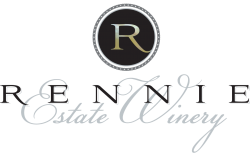Tweaking the names and wines at Rennie Estate Winery on Niagara’s Beamsville Bench; 2011s released

Niagara vigneron Graham Rennie was tasting his 2010 Scarpa, a Ripasso-style blend of Cabernet Sauvignon and Cabernet Franc, with a good Italian fellow a little while back.
The man drank it up, and seemed to really like it, according to Rennie, but he had a perplexed look on his face as he stared at the label.
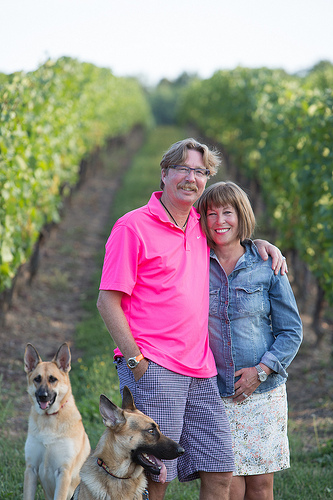 “He said he loved the wine but couldn’t understand why I would name it Scarpa,” Rennie tells me. Turns out “scarpa” means shoe in Italian. Not the kind of association you want with a fine bottle of wine.
“He said he loved the wine but couldn’t understand why I would name it Scarpa,” Rennie tells me. Turns out “scarpa” means shoe in Italian. Not the kind of association you want with a fine bottle of wine.
When Rennie was researching names for his new wines he was going for the Italian version of “escarpment” to associate his Ripasso style red to the landscape of the Beamsville Bench where he lives and grows his grapes. He thought Scarpa translated to escarpment and it wasn’t until after the wine was bottled and released that he discovered the name gaffe.
So, with the 2011 vintage, the Scarpa has been changed to Scarpata, yes, the proper Italian for escarpment.
And, since he was already changing the name Scarpa, he decided to rename his top bottling, the Gaia, his super-Italian appassimento-style wine, to simply “G” (Rennie’s nickname) to avoid some similarities to the famous Italian producer Gaja and Angelo Gaja’s oldest daughter, Gaia Gaja, who’s becoming as famous as her father these days.

Such is the learning curve for a new producer in Niagara. As is often the case, it’s the journey that makes you stronger. Rennie and his wife Christine’s portfolio of top-drawer Pinot Noir, Chardonny and Italian-inspired red blends is growing stronger with each passing vintage.
The fledgling wine couple, who purchased one of the oldest vineyards on the Beamsville Bench in 1997, bottled their third vintage (second commercial vintage) of wine recently. In its short history, Rennie Estate Winery has gone from making wines (they do not own a winery, just vineyards) at Angels Gate with Philip Dowell as the winemaker to Malivioire, where Shiraz Mottiar now crafts the wine.
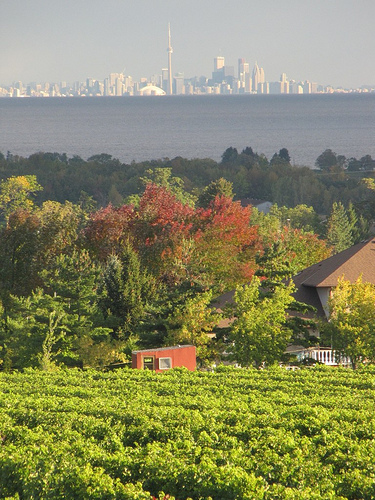 The Rennies have spent a great deal of time perfecting their small-lot artisanal wines, using the Italian appassimento method of drying grapes as well as a Ripasso style of wine to go with a top-notch traditionally-made Pinot and Chardonnay. A new temperature-controlled drying facility was developed and partially funded by Rennie in a partnership with the Vineland Research and Innovation Centre for the appassimento wines.
The Rennies have spent a great deal of time perfecting their small-lot artisanal wines, using the Italian appassimento method of drying grapes as well as a Ripasso style of wine to go with a top-notch traditionally-made Pinot and Chardonnay. A new temperature-controlled drying facility was developed and partially funded by Rennie in a partnership with the Vineland Research and Innovation Centre for the appassimento wines.
We are starting to see where these wines are headed stylistically with the 2011 vintage.
Rennie takes no shortcuts and replicates the drying process used in Veneto to get maximum concentration and complexity in his wines.
“Producing small lot, red wines that would blow consumers away seemed like a very worthwhile and demanding challenge,” Rennie says. “The thought of achieving this goal was very motivational for me.”
Here’s what to look for after tasting the wines with Rennie recently. His 2011s are now for sale at Malivoire’s retail store.
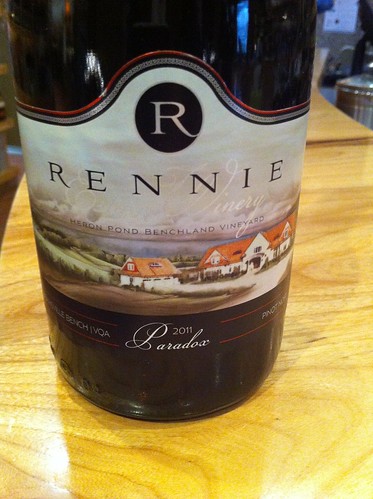
Rennie Estate Paradox Pinot Noir 2011 ($40, 90 points) — The Rennies’ Estate Heron Pond Vineyard on the Beamsville Bench not only allows some of the most spectacular views in Niagara it also produces fabulous Pinot and Chardonnay grapes. The Rennies take a small, select portion of the vineyard’s grapes to bottle wines under their own label. The 2011 Pinot shows lovely cherry-raspberry fruit on the nose with cedar, vanilla and light spice in a pretty and perfumed style. It’s medium-bodied on the palate with elegant red fruit, toasted spices, a touch of anise and all delivered on a silky, smooth finish. My kind of Pinot.
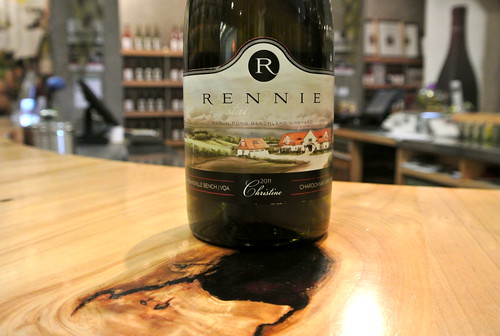
Rennie Estate Christine Chardonnay 2011 ($35, 91 points) — Made from the best parcels of Chard at Heron Pond and aged for 15 months in French oak, 50% of which is new. It’s made unfiltered. The nose is expressive with tropical fruits, pear, pineapple and lovely integrated oak and vanilla spice. It has gorgeous depth of flavour on the palate with toasted oak, spice, sweet vanilla and perky acidity to lift the flavours through the finish.
Rennie Estate Scarpata 2011 ($45, 91 points) — This is Rennie’s Ripasso style wine made from Cabernet Sauvignon grapes and blended with the skins of the appassimento “G” wine made up of the dried Merlot, Cab Sauv and Cab Franc grapes. The nose is expressive with black currants, cherry kirsch, Christmas pudding, blackberry liqueur and rousing spice notes. This is all about concentrated currants, red fruits, baking spices, gritty tannins and length through the finish.
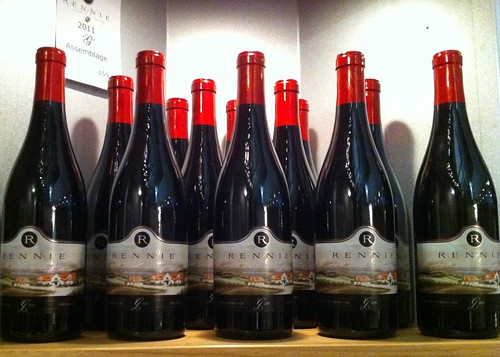
Rennie Estate “G” 2011 ($55, 92 points) — “This is a different style,” says Rennie. “I wanted something closer to traditional Amarone. I think I’ve achieved that with this.” To make this complicated wine, Rennie picks his Merlot (50%), Cabernet Sauvignon and Cabernet Franc (both 25%) at 21 Brix. The three varieties spend 70 days in custom drying racks (up to 35% loss of juice) to achieve a sweetness level of 29 Brix. The blend spends 18 months in a combination of new and old oak and is finished at 16.5% alcohol. To be perfectly frank, it’s a big, huge wine, and you need to know that right off the bat. It’s dark, almost opaque in the glass and throws off big aromas of crushed black currants, thick blackberry compote, caramel, oak stylings, vanilla toast, forest floor and dried herbs. On the palate, it’s rich and unctuous with an array of highly extracted fruit flavours including currants, plums, cherries, sultana raisins and bolstered by vanilla-nutmeg-cinnamon spices, earth and medicinal herbs. The tannins are evident, but not overly aggressive. In all, it’s a big, powerful wine with the fruit to stand up to 16.5% alcohol and enough acidity to maintain a modicum of freshness. A wine to hold for a few years to come.
